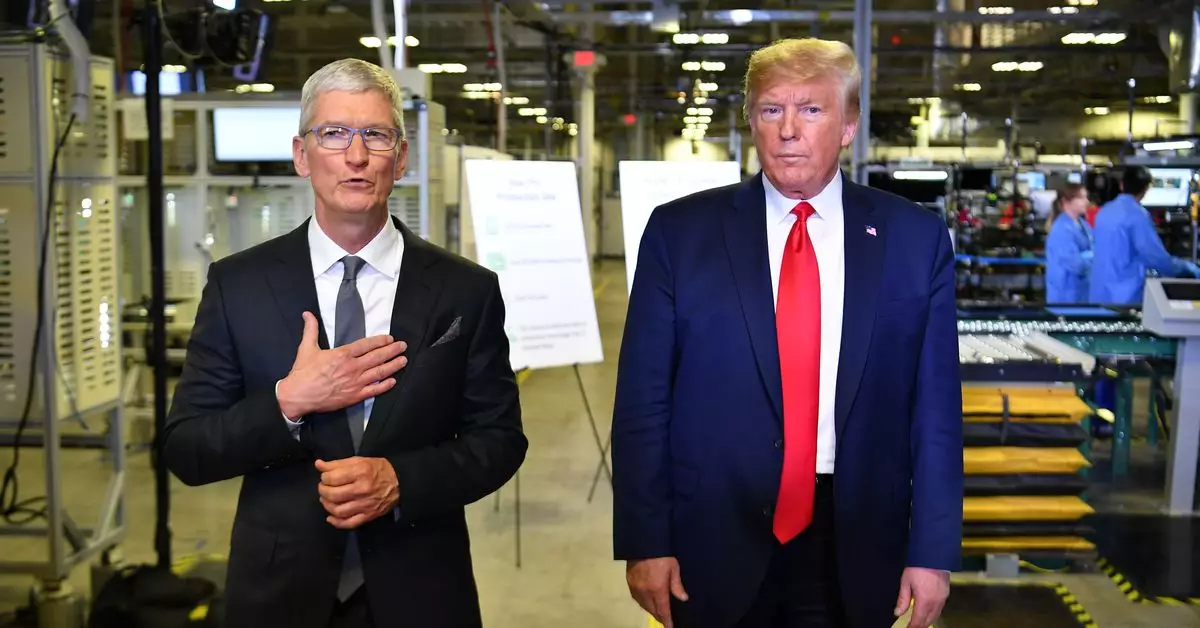In the intersection of technology and politics, few relationships have proven as fascinating and strategically beneficial as that between Apple CEO Tim Cook and former President Donald Trump. While many tech leaders found themselves at odds with Trump during his presidency, Cook successfully navigated the complexities of this landscape to secure Apple’s interests. According to a recent report by the Wall Street Journal, Cook’s approach to influencing Trump’s policies was marked by a personal touch that many corporate executives have struggled to replicate. This relationship has now set a precedent that other companies are eager to emulate, revealing a growing understanding of the interplay between industry leaders and government officials.
One of the most notable aspects of Cook’s strategy was his direct engagement with Trump, opting for personal connections over traditional lobbying methods. Instead of deploying government relations teams or lobbyists, Cook chose to leverage one-on-one meals and phone calls to communicate directly with the president. This unconventional approach—grounded in simplicity—enabled Cook to maintain clarity in discussions and effectively pitch his agenda without the distractions that often accompany larger corporate lobbying efforts. Without the noise of competing interests, Cook could focus the conversation on specific, impactful points, thus maximizing the likelihood of favorable outcomes for Apple.
Cook’s technique didn’t just revolve around personal connections; it also involved a disciplined approach to information. By honing in on a singular data point or an issue for each meeting, he prevented discussions from meandering into less relevant territory. This preemptive strategy ensured that each engagement with Trump was directed and impactful, facilitating the president’s understanding of how particular policies could resonate with his objectives. In this way, Cook not only advanced Apple’s agenda but also supported Trump’s administration, creating a rapport based on perceived mutual benefit.
The Wall Street Journal highlights that Cook’s success has inspired other leaders, such as representatives from Boeing and FedEx, to seek similar pathways to influence. This yearning for direct engagement is indicative of a broader trend where tech leaders increasingly prefer personal rapport with political figures over traditional methods of influence. As firms compete for the attention of policymakers, the lessons learned from Cook’s relationship with Trump serve not just as an example but as a potential blueprint for fostering connections that lead to tangible business benefits.
This evolving landscape has also underscored a more unusual aspect: the role of flattery in forging political connections. Conversations have arisen about how various tech executives, including leaders from Google and Meta, have employed compliments and support in their interactions with Trump. Such strategies reflect an understanding that maintaining rapport may often involve an element of personal appeal, akin to an old adage that suggests it’s easier to win hearts with honey than with vinegar. The desire to be perceived favorably in the eyes of the administration has led many tech leaders to adopt a mindset that values personal accolades just as much as business discussions.
In sum, Tim Cook’s nuanced approach during Trump’s presidency illuminates a strategic paradigm that melds direct engagement with focused communication. As other industry leaders seek to follow in his footsteps, the essence of their efforts may hinge on personal rapport, thus shaping the future landscape of corporate influence in politics.


Leave a Reply